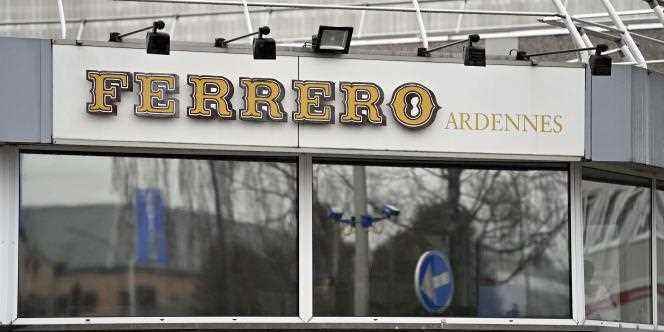The Belgian health authorities announced on Friday June 17 that they had given the green light to the restarting for a three-month test period of the Ferrero factory in Arlon, in the south of the country, at the heart of a scandal of chocolates contaminated with salmonella and closed since April 8.
“During this period, the raw materials as well as each batch of food produced will be analyzed. It is only if these analyzes give a compliant result that the products can be placed on the market.said the Federal Agency for the Safety of the Food Chain (Afsca).
The Italian giant, known worldwide for its Nutella and Kinder brands, has confirmed that it has received this “conditional authorization” restart. ” From today [vendredi]the factory begins the process of reopening which will lead to the restart of the production lines in a few weeks”underlined the group, which is headquartered in Luxembourg.
“What happened is extremely serious”
“This reopening follows a thorough cleaning and food safety checks carried out in close collaboration with the Afsca”he said in a press release. “We have done absolutely everything to ensure that this story does not happen again”has said Friday, the director of external affairs of the Ferrero group, Anne Edwards, on RTL radio. The representative of the group admitted that “What happened is extremely serious” and renewed the band’s apology to consumers.
The Arlon factory in the Belgian Ardennes is a major site for the group, where a thousand people are employed. According to Ferrero, “more than 1,800 quality tests have been carried out, 10,000 parts have been disassembled and cleaned” and investments made in particular to install “300 meters of new pipes”.
At the beginning of April, with the approach of the Easter holidays, the group had recalled all the products manufactured in its factory in Arlon after the report of dozens of cases of salmonellosis possibly linked to the consumption of its chocolate products. in several European countries.
370 cases identified in the European Union and the United Kingdom
Kinder Surprise, Kinder Mini Eggs, Kinder Surprise Maxi 100 g and Kinder Schoko-Bons were concerned, in all the countries where they are distributed, and whatever their expiry date. Since the beginning of April, more than 3,000 tons of Kinder products have been withdrawn from the market in France where 81 cases of salmonellosis have been detected, mostly in children under 10 years old.
This is “the biggest product recall of the last twenty years”admitted Ferrero’s managing director France in an interview with Parisian at the end of May, during which he announced economic losses of around “several tens of millions of euros”.
The European Center for Disease Prevention and Control said that as of June 3, 370 confirmed and 22 probable cases of Salmonella typhimurium monophasic had been identified in EU countries and the UK.
Judicial inquiries in Belgium and France
Suspected of having been slow to react to a problem identified in December, Ferrero is the target of several legal investigations. In Belgium, an investigating judge has been investigating since April 19 on suspicions of failure to comply with “traceability obligations in the food chain”, “breaches of the legal provisions on the safety and hygiene of foodstuffs”, “involuntary bodily harm” and “failure to assist a person in danger”.
In France, a consumer association filed a complaint and an investigation was opened on May 25 by the Paris prosecutor’s office, in particular for “deception aggravated by the danger to human health” and “endangering the lives of others” .

Also listen How to avoid food scandals: Buitoni, Kinder, Lactalis?
According to Ferrero management, the contamination at the Arlon site comes from “of a filter located in a dairy butter vat” and would have arrived “either by contaminated raw materials or by people”.
